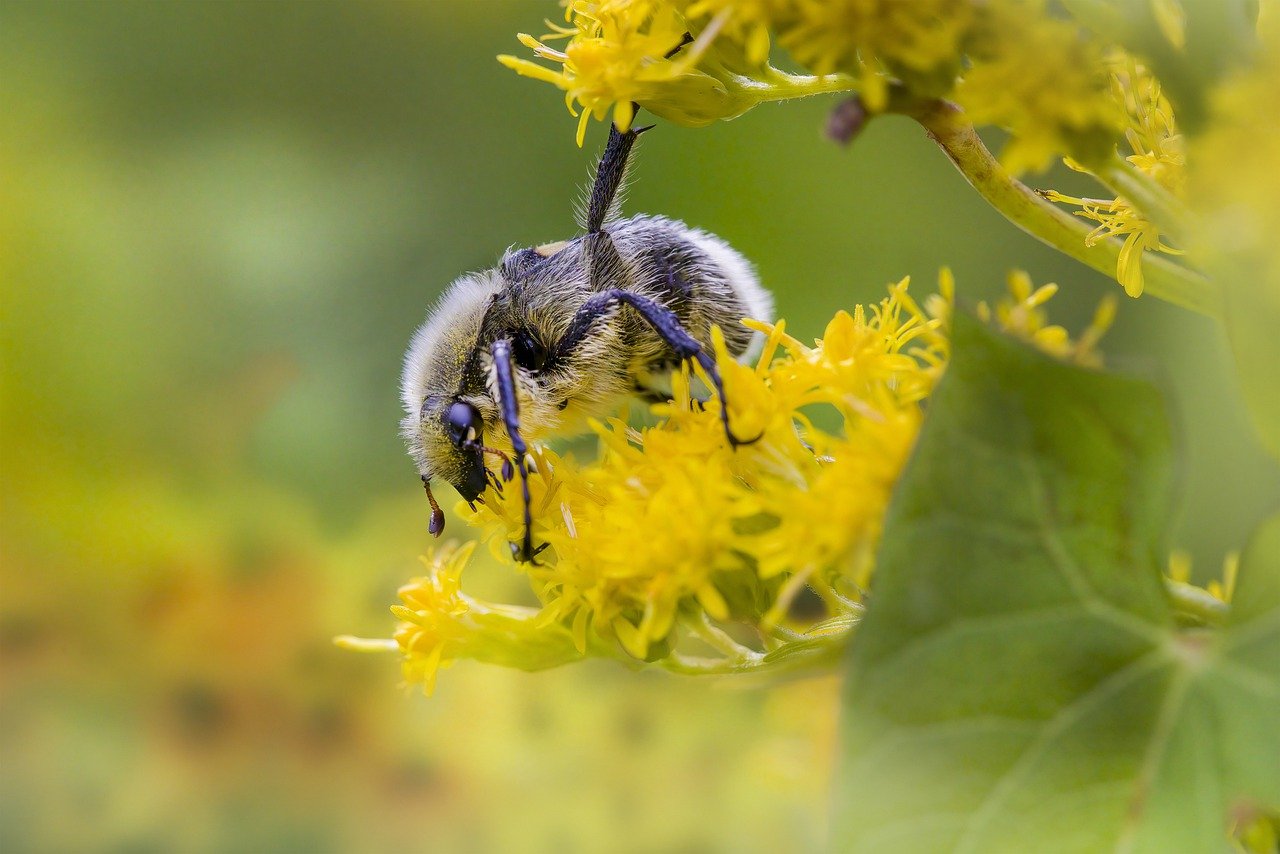The Eurasian Bee Beetle (Trichius fasciatus) is a distinctive beetle species known for its resemblance to bees and its fascinating behavior. Here’s some information about this intriguing insect:
- Appearance: The Eurasian Bee Beetle has a striking appearance, with a yellow and black striped body reminiscent of bees. Its body is elongated and slightly flattened, with a rounded head and clubbed antennae. The beetle’s coloring serves as a form of mimicry, helping it to deter predators by resembling stinging insects like bees.
- Habitat: These beetles are commonly found in various habitats across Europe and parts of Asia, including meadows, gardens, parks, and woodland edges. They are particularly attracted to flowers, where they feed on nectar and pollen.
- Behavior: Eurasian Bee Beetles are active during the warmer months of the year, typically from spring to autumn. They are diurnal insects, meaning they are active during the day. Like bees, they can often be seen buzzing around flowers, collecting nectar and pollen. Despite their bee-like appearance, Eurasian Bee Beetles do not possess stingers and are harmless to humans.
- Life Cycle: The life cycle of the Eurasian Bee Beetle consists of four stages: egg, larva, pupa, and adult beetle. Females lay their eggs in rotting wood or decaying plant matter, where the larvae develop and feed on organic material. After pupating, the adult beetles emerge and begin their quest for food and mates.
- Ecological Role: Eurasian Bee Beetles play a role in pollination, similar to bees and other flower-visiting insects. While they are not as efficient at pollination as bees, they still contribute to the transfer of pollen between flowers as they feed.
- Conservation: Eurasian Bee Beetles are not considered threatened or endangered, as they are relatively common and have a wide distribution range. However, like many insect species, they may face habitat loss and fragmentation due to human activities such as urbanization, agriculture, and deforestation. Conservation efforts aimed at preserving and restoring their natural habitats are important for ensuring the continued survival of Eurasian Bee Beetle populations.
Overall, the Eurasian Bee Beetle is a fascinating and beneficial insect species valued for its role in pollination and its charming bee-like appearance. Observing these beetles in gardens and natural areas can provide insight into their behavior and ecological significance.
Visited 981 times, 4 visit(s) today
Views: 1417
Subscribe to the newsletter:
